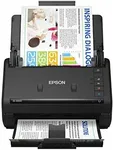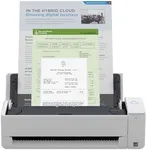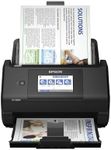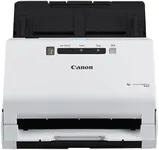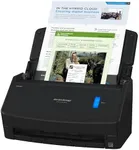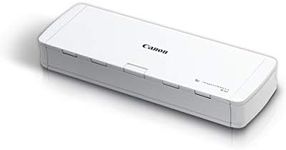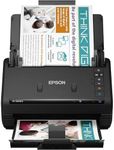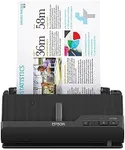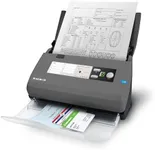Buying Guide for the Best Multi Page Scanners
Choosing the right multi-page scanner can significantly improve your productivity, whether you're digitizing documents for personal use or managing a high-volume office environment. The key is to understand the various specifications and how they align with your specific needs. By focusing on the most important features, you can ensure that you select a scanner that meets your requirements and offers the best performance for your tasks.Scanning SpeedScanning speed is measured in pages per minute (PPM) and indicates how quickly a scanner can process documents. This spec is crucial if you need to scan large volumes of documents regularly. Scanners with speeds of 20-30 PPM are suitable for moderate use, while those with speeds of 40-60 PPM or higher are ideal for high-volume environments. Consider your typical workload to determine the appropriate scanning speed for your needs.
ResolutionResolution, measured in dots per inch (DPI), determines the clarity and detail of the scanned images. Higher DPI values produce clearer and more detailed scans, which is important for documents with small text or intricate graphics. For general document scanning, 300 DPI is usually sufficient. If you need to scan photos or detailed images, look for scanners with 600 DPI or higher.
Automatic Document Feeder (ADF) CapacityThe ADF capacity indicates how many pages the scanner can hold and process automatically without manual intervention. This feature is essential for multi-page scanning tasks. ADF capacities can range from 20 to over 100 pages. For occasional use, a lower capacity may suffice, but for frequent, high-volume scanning, a higher ADF capacity will save time and effort.
Duplex ScanningDuplex scanning allows the scanner to scan both sides of a page simultaneously. This feature is important if you frequently work with double-sided documents, as it can significantly speed up the scanning process and reduce manual handling. If you often scan double-sided documents, ensure the scanner supports duplex scanning.
Connectivity OptionsConnectivity options determine how the scanner connects to your computer or network. Common options include USB, Wi-Fi, and Ethernet. USB is suitable for direct connections to a single computer, while Wi-Fi and Ethernet are ideal for shared use in an office environment. Consider your setup and whether you need the flexibility of wireless or networked scanning.
Software and CompatibilityThe software that comes with the scanner can greatly affect its usability and functionality. Look for scanners that include robust software for document management, OCR (optical character recognition), and integration with cloud services. Additionally, ensure the scanner is compatible with your operating system and any specific applications you use.
Size and PortabilityThe physical size and portability of the scanner can be important depending on your workspace and how you plan to use it. Compact and portable scanners are ideal for small offices or mobile use, while larger, more robust models are better suited for dedicated scanning stations. Consider the available space and whether you need to move the scanner frequently.
Maintenance and DurabilityMaintenance and durability are important factors, especially for high-volume use. Look for scanners with easy-to-replace parts and good customer support. Durable models with a high daily duty cycle rating are designed to handle frequent use without frequent breakdowns. Assess your scanning volume and choose a model that can reliably meet your demands.
